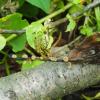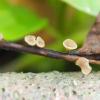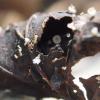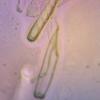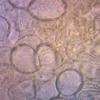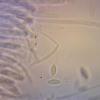
08-05-2015 17:11
 Edit Szilvásy
Edit Szilvásy
Hi Everybody!Today I found these stalked species o

08-05-2015 11:47
Salvador TelloHola.Tengo estos hongos recogidos en el mes octubr

08-05-2015 08:27
Bonjour. Je passe un pick-up d'une Gyromitra alpin

05-05-2015 23:47
 Jenny Seawright
Jenny Seawright
Hello all, I wondered if anyone might have details

06-05-2015 17:33
 Martin Cooper
Martin Cooper
Hi,I am new to this site, so please forgive any mi

06-05-2015 22:50
 Rubén Martínez-Gil
Rubén Martínez-Gil
Hola a todos. Subo unas fotos de unas copitas que

07-05-2015 20:23
 Bernard Declercq
Bernard Declercq
Hello,Collected on leaves of Rhododendron ponticum

07-05-2015 16:22
hannie wijersHello. I just have another one.Also on the dung o
Maybe Hymenoscyphus
Edit Szilvásy,
08-05-2015 17:11
 Hi Everybody!
Hi Everybody!Today I found these stalked species on dead leaves of Acer/Populus.
Spores are 3.5-4x 7-8 .
J+
Could you tell me what this is?
Thank you in advance for your help.
Edit
Hans-Otto Baral,
08-05-2015 17:44

Re : Maybe Hymenoscyphus
I suspect Ciboria conformata, a frequent species on alder leaves in spring.
Edit Szilvásy,
08-05-2015 18:51

Re : Maybe Hymenoscyphus
Dear Zotto,
Thank you very much.
Edit
Thank you very much.
Edit

